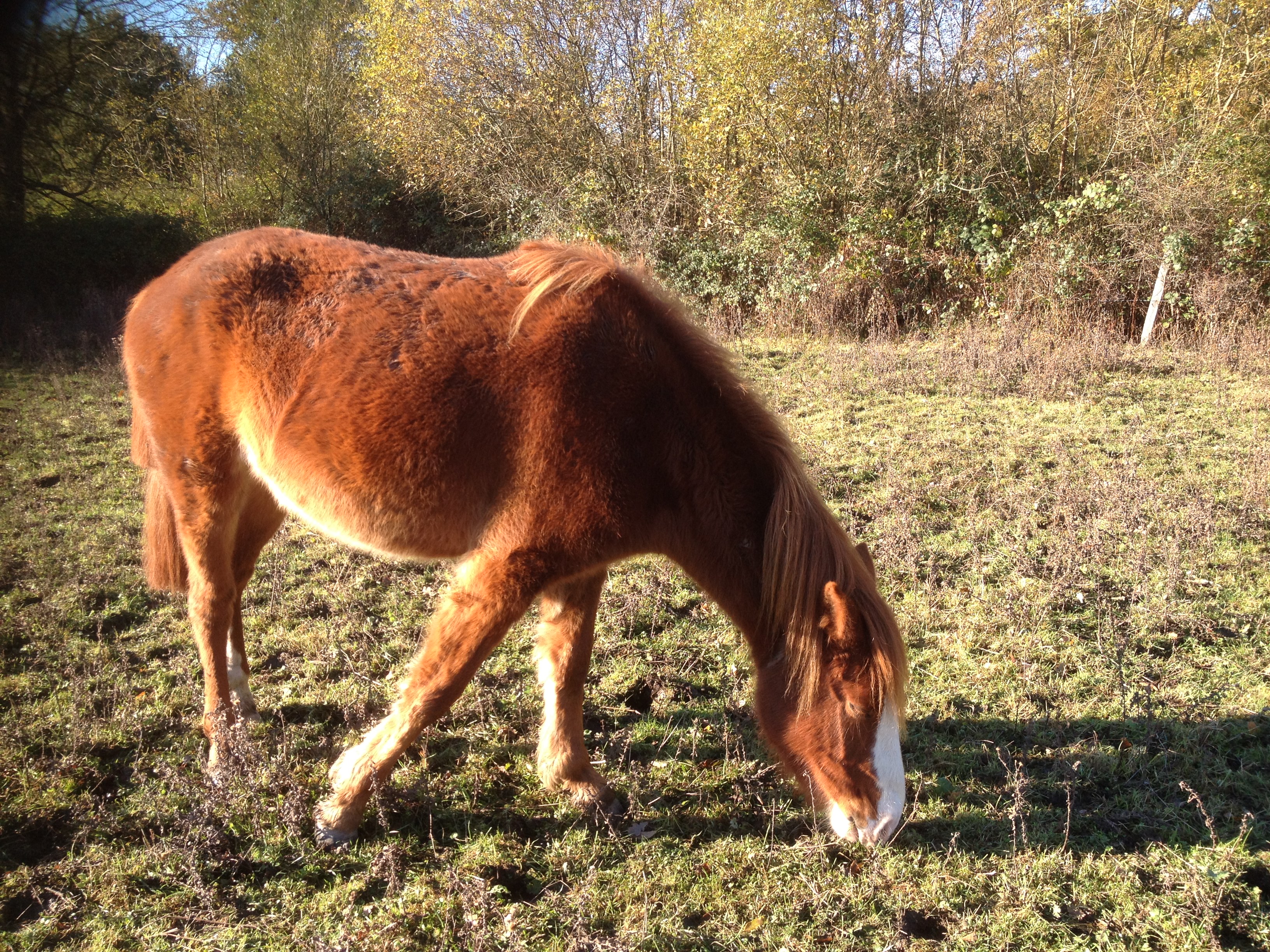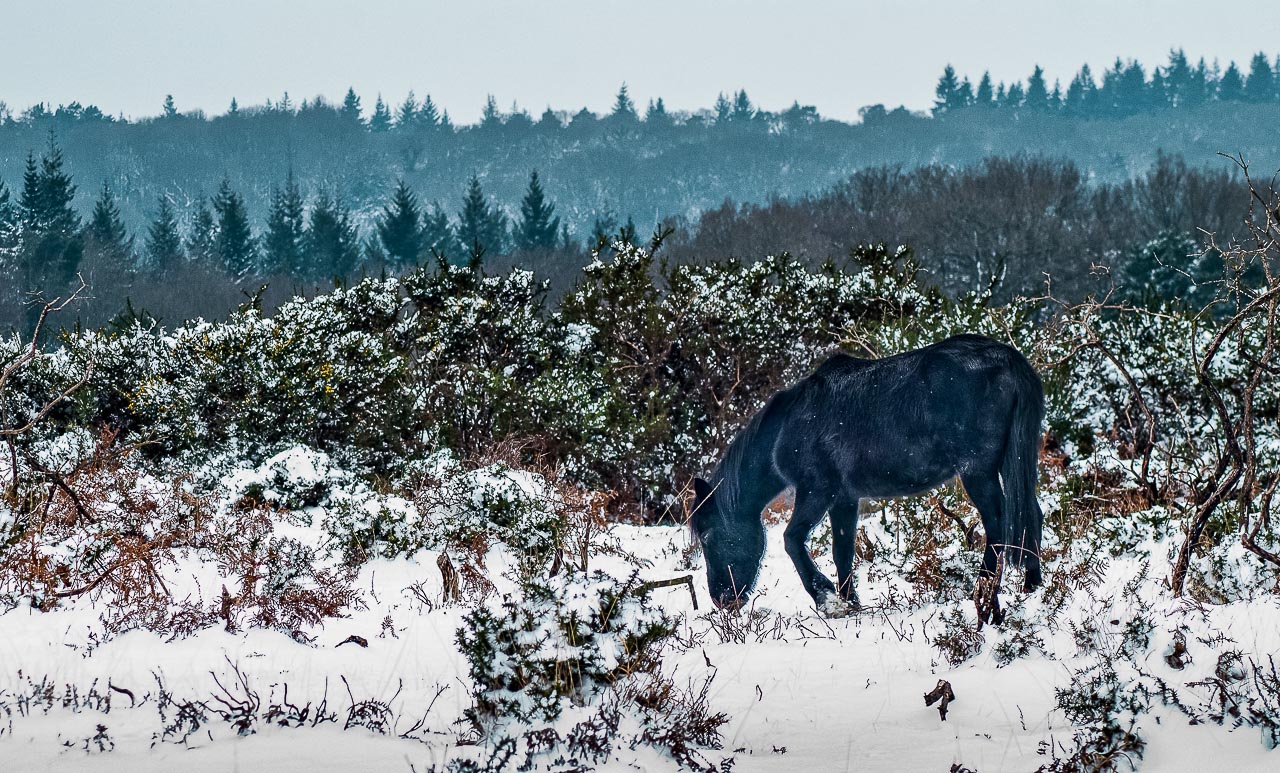It’s getting noticeably colder (December 2014). My outdoor coat, which hangs in the porch, is chilly to put on in the morning but as I go about the early chores on my holding I soon warm up. I’ve never forgotten being told that if you set off warm you’re wearing too many layers. So I try to make sure that I don’t overburden myself with jumpers and fleeces. New Forest ponies, though, are well prepared for the bitter cold of winter. Even though I have provided the ponies on my holding with a field-shelter they don’t use it. During periods of wind and rain they prefer to stand under the hedgerow, which acts as a windbreak. They huddle together with their backs against the wind and their thick tails fan out behind them keeping their legs and bellies warm. New Forest ponies have low set on tails that are amply suited for this purpose. They are also able to take advantage of the dips and hollows in the terrain, which offer shelter or contain milder pockets of air, and they move around according to the direction of the prevailing wind.
Dressed for winter
The ponies are now dressed for winter in their thick coats and look like shaggy-haired Norman Thelwell creations. I do not put blankets or rugs on my ponies, as I believe that doing so would inhibit their natural ability to regulate their own temperatures. The physiology of the New Forest pony has adapted them to cope ably with the lower temperatures provided that they are able to access shelter and find enough food. Warmth from the winter sun and body heat is trapped next to their skin by soft hairs that act as a thermal layer while piloerector muscles, the one’s responsible for goosebumps on humans, make the pony’s hairs stand up trapping heat and increasing insulation. On the colder mornings the ponies often carry a layer of frost on their backs, which demonstrates the efficiency of their winter coat in avoiding heat loss. During periods of wet weather waterproofing body oils, called ‘sebum’, and downward sloping hair helps to repel water and keep the pony dry.
Meadow hay of summer
Because keeping warm takes up a lot of energy I also make sure that my home-kept ponies have plenty of hay to eat and access to a mineral lick, which they seem to enjoy the taste of. The clink of the gate as I open it alerts them to my presence. They know by the sound of the squeaky wheelbarrow that fodder is on the way and line up along the fence line in expectation as I dole out thick slices of the meadow hay that was made in the summer. I always put out more piles of hay than there are ponies in the field so that there are plenty of opportunities for the lower ranking individuals to feed. Once the ponies are fed and checked over I can retreat back to the house secure in the knowledge that between nature and myself the ponies’ needs are well catered for.

New Forest ponies are hardy and resourceful. Their thick winter coats help to keep them warm and dry.
Top photo courtesy of Paul Chambers: http://www.paulchambersphotography.com/



You must be logged in to post a comment.